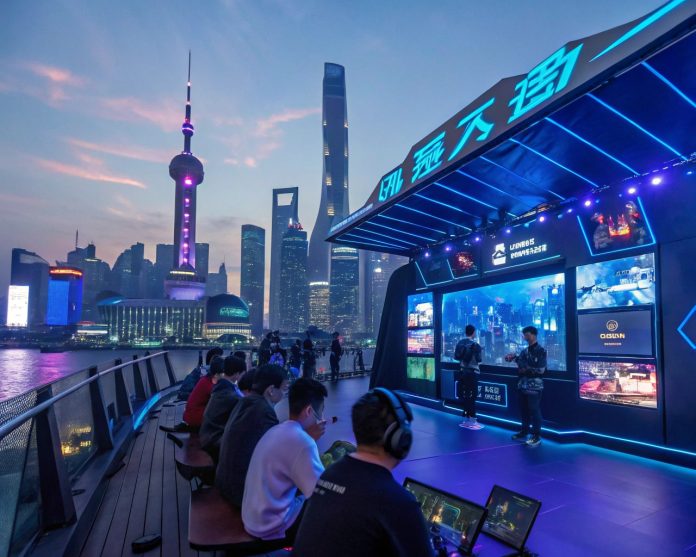Introduction: China’s Gaming Juggernaut
In 2025, China’s gaming industry is the world’s largest, valued at $71.18 billion and projected to reach $102.8 billion by 2030, growing at a 7.63% CAGR, per Mordor Intelligence. With 668 million gamers—46% of the population—China commands 25% of global gaming revenue. Fueled by 800 million 5G connections and a digital-first culture, the industry thrives on mobile gaming, esports, and innovative tech like VR and cloud gaming. This post explores China’s gaming ecosystem, its technological and cultural drivers, and the challenges shaping its global dominance, showcasing a digital revolution transforming entertainment.
Mobile Gaming: The Industry’s Backbone
Mobile gaming accounts for 68% of China’s gaming revenue ($48.4 billion in 2025), driven by widespread smartphone adoption (83% mobile penetration) and affordable data plans. Titles like Honor of Kings and Peacekeeper Elite dominate, with 150 million monthly active users, per a 2024 Newzoo report. Tencent and NetEase hold 61% of the mobile and PC market, though competitors like miHoYo, behind Genshin Impact, are gaining ground. The rise of mini-games on platforms like WeChat, with 100 million daily users, enhances accessibility. 5G’s ultra-low latency enables console-quality graphics on mobiles, while cloud gaming, led by Migu and Xiaomi, reaches 30 million users, expanding access to rural areas.
Esports: A Cultural and Economic Force
China leads the global esports market, valued at $35.76 billion in 2024, with 102 tournaments hosted annually. Honor of Kings tournaments boast $14.7 million prize pools, per Niko Partners. Tencent’s League of Legends Pro League and Valorant draw millions, with 42.8% of gamers making in-game purchases while watching streams. The government’s recognition of esports as a sport has professionalized the industry, with academies in Shanghai training 5,000 players yearly. Offline events, revived post-COVID, attract 10 million spectators, amplifying China’s esports dominance and cultural influence.
Cultural Innovation and Global Expansion
Chinese studios are crafting globally resonant games, like Black Myth: Wukong, China’s first AAA title, which generated $5.17 billion in overseas sales in Q3 2024. Rooted in Chinese mythology, such games export cultural narratives to 50 countries, contributing $17.34 billion in global revenue. Tencent’s investments in Riot Games and Epic Games, alongside miHoYo’s cloud-rendering partnerships, strengthen China’s global footprint. The government’s AVGC policy and $300 million in R&D foster local IP development, with 1,000 domestic games approved in 2023, signaling a shift toward creative autonomy.
Technological Frontiers: VR, AR, and Blockchain
China’s gaming industry leverages cutting-edge tech. VR gaming, backed by the 2021–2025 Five-Year Plan, gains traction with 5 million users, driven by Meta’s deal with Tencent for VR headsets. Cloud gaming, supported by 892 million 5G connections by 2025, delivers high-quality experiences to low-end devices. Blockchain-based games with NFTs, like those by miHoYo, enable asset ownership, attracting 2 million users. AI enhances game design, reducing development costs by 10%, while 5G investments ($116 billion) ensure seamless multiplayer experiences, positioning China at the forefront of gaming innovation.
Challenges: Regulation and Accessibility
Stringent regulations, including a 2021 crackdown limiting minors to three hours of weekly play, reduced the under-18 gamer base by 0.33% to 664 million in 2022. Game approval freezes, like the 2021 eight-month halt, cost 14,000 studios, per the South China Morning Post. Rural areas, with 35% of gamers, face connectivity gaps, with 20% lacking stable 5G. Addiction concerns and piracy, costing $500 million annually, persist. Clearer licensing and infrastructure investments are needed to sustain growth.
Conclusion: China’s Gaming Legacy
China’s 668 million gamers in 2025 drive a $71.18 billion industry that blends mobile dominance, esports fervor, and cultural innovation. With $400 billion in tech investments and policies fostering global expansion, China redefines gaming. Despite regulatory and accessibility hurdles, its embrace of 5G, VR, and AI ensures leadership. This is not just a market—it’s a cultural and technological revolution, shaping global entertainment with every play.
